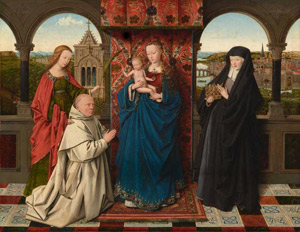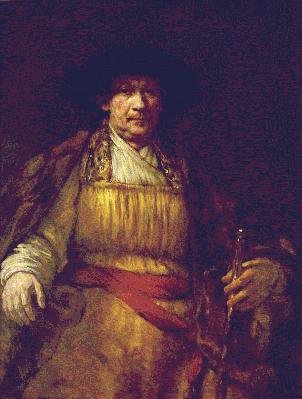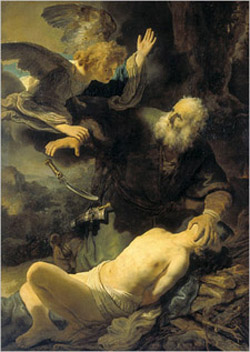5.30.25 — A Larger Map
To wrap up from last time on a larger home for the Frick Collection, what has changed in all those new square feet (eighty-two thousand of them, should you be keeping track)? You may be tempted to say nothing—and a good thing, too. It would take a remarkable memory anyway to spot the new, beyond a room for drawings.
 Could two of the three Vermeers have left that one large room, and could anything else has moved with them? That glass-enclosed corridor offers a clue. It now displays porcelain, as does a room just past the long one, with a surprising clarity of color and representation. They signal a renewed effort to integrate the decorative arts, but as art rather than the highly wrought luxury goods of the Eveillard and Moore gifts just months before.
Could two of the three Vermeers have left that one large room, and could anything else has moved with them? That glass-enclosed corridor offers a clue. It now displays porcelain, as does a room just past the long one, with a surprising clarity of color and representation. They signal a renewed effort to integrate the decorative arts, but as art rather than the highly wrought luxury goods of the Eveillard and Moore gifts just months before.
That second room for porcelain used to hold a standing saint by Piero della Francesca—whose scowl, bearing, and red robe should stop you in your tracks. Beside it hung a painting by Jan van Eyck completed after his death, with the broader strokes of Petrus Christus. van Eyck’s sunlight is as intricate as his city, its urban architecture a tale of suffering and release. Both paintings have moved upstairs. While not imposing order on a seemingly untouchable collection, the second floor does now frame the whole with the Renaissance and pre- or Post-Impressionism. Art itself provides the map.
Reaching them delivers the most startling change of all. A lavish stairwell, unlike a second just past the ticket counter, was there all along, where a museum visit might once have ended. The mansion is that much more one’s own. Is Frick’s daughter coming down soon for breakfast? You can judge better when the restaurant opens in summer, but I suspect not. The rooms upstairs have found a purpose in art, but memories of home are thoroughly erased.
It is not the museum I once knew, only not in the way I expected and feared. After the luxuriant architecture of the old museum, the upstairs rooms seem modest and cold. They have a more conventional symmetry, to either side of twin corridors, in cramped quarters with no invitation to the eye between rooms. They have almost no decorative detail, and the corridors are barer still. They can make art look abandoned by mistake—and a visitor an intrusion. Rather than a museum or a mansion, one could be casing out a New York apartment.
Then, again, architecture can change only so much, and art has a visible and palpable presence all its own. It surprised practically everyone that the Frick Collection looked great in its temporary home at the Frick Madison (the Whitney’s former home and the former Met Breuer)—but a collection this good would look halfway decent on the subway. Bellini’s Saint Francis really could hold a room to itself, and it can hold its place in the mansion now. An expansion is no less needed, and the bareness also signals a proper restraint. Piero, Hans Holbein, Diego Velázquez, and Francisco de Goya can still send you home in fear for your life. Still, this may be only the start of hangings and rehangings yet to come.
Meanwhile, they bring home the greatest change of all. No longer my private museum, the new Frick is downright packed, even on a weekday. And the crowds may find a map right within that great hall and within the art. Jacob van Ruisdael takes care to paint alternate paths through a wooded Dutch landscape, to let you know exactly where you might go. Vermeer’s woman with a letter holds a pen with its point on the table and a space above that increases millimeter by millimeter, ending in her hand. Imagined or observed, art knows to take their measure.
Read more, now in a feature-length article on this site.

